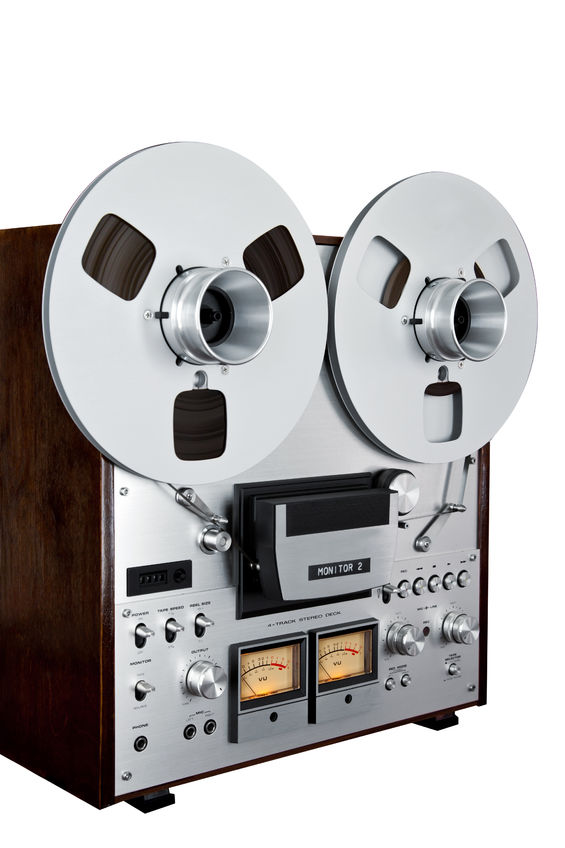
It doesn’t matter what type of music a musician plays, whether it is rock, jazz, bluegrass, or country music. Even if they have learned to play music by reading music, they have still listened to music and plucked it out on their instrument.
Hey, I am an accomplished piano player who plays the piano (keyboard, for you modern listeners). And, even though my mother handed me a program to learn how to play by ear, written by an accomplished professor of music and a college known for their music program, it was not the zing that put the learning in my soul. Instead, it was getting down to business and simply tinkering with the piano and playing what I heard. There was really no “program” that did it. Instead, doing it did it! Does that make sense?
You may be afraid that you are too old to play music by ear. But you are not! You can do it!
Where to Start
The key to where to start involves listening.
Even though there are no methods per se that work as well as just doing it, there are tips that may help you on your way.
Practice the Basics
Even though you are going through the process of learning to play by ear, don’t discontinue the basics, the foundation. Keep practicing your chords and challenging yourself of your progress with mastering the instrument.
All of this will help you in the long run when it comes to playing by ear. Also, it helps to make you a great musician.
Method 1: Slowing Down the Music
For example, one tip is to slow down the music so that you can hear it slowly and apply it to your playing on the instrument.
In some cases, you probably don’t have to slow down the music. For example, there are ballads that are already quite slow and you may be able to pick up the tune just by listening to it at normal speed. But, if you cannot, and need to slow down the song, don’t worry. You are still normal and possibly exceptional 😉
It used to be a lot easier years ago when slowing down the music. For example with reel-to-reel, you could just use half the speed of the normal speed. Of course, reel-to-reel is basically ancient these days.

Some of us may have had the privilege to use reel-to-reel when being trained as a sound engineer, but there are so many digital options that it is not often used these days.
The challenge, when using the reel-to-reel back in the old days was that slowing it down affected the pitch as well. So, it was not necessarily a perfect solution.
And, even with the slowing down that the reel-to-reel provided, at, say, half-speed, it was often too fast for some to catch the music by ear. It has been said that a one-tenth speed is a better speed for most people to learn to play by ear.
The Migration to Digital Recording
While reel-to-reel was convenient, like a flip of the switch, we are actually fortunate that we have moved into the digital age. Fortunate for the reasons listed above, but also because we are more likely to be able to reach the goal of one-tenth the speed or whatever speed we want.
And, you can slow down the music without affecting the pitch! That is huge! I mean, what are you learning to play be ear (notice the “ear” and hearing part of that) when the pitch isn’t right? Are you learning to play something incorrectly?
With digital recording technology, you don’t have to worry about it as much. But, the scope of the how-to is a bit beyond the scope of this article. Usually, it is a slider in the software, where you can use your mouse to change the speed. Of course, it depends on the software, but it is usually fairly easy to find, especially with the user guide that comes with the software.
And, with digital music, it is often fairly easy to import the music into your software. Again, be sure to consult your user guide.
[commissionologyCommissionMachine2017]
Method 2: Humming the Music Back to Yourself
It is also normal to be confused when listening to a whole band (or orchestra). It can be confusing when you are hearing several notes. If you find yourself drawn to a particular aspect of the song, feel free to go with it. You may be learning the harmony part, but that is ok. It is still complementary to the song and will work for that role. In the case of trying to separate out the different instruments and harmonies and melodies, the “humming” method (below) may help.
Also, slowing down the music may help you to separate out these different parts.
But, another method is to use the humming method. That is where you listen to the music, pick out the melody, and then hum it. You can keep humming as you find the notes on your instrument. The advantage is that you can manage the replay with minimal effort. You can slow down your humming back or speed it up again.
You can also use this method while you are doing something else (like cooking 🙂 ). And, if you have the words typed out and printed, you can stop to write in the chord (note) as you figure it out, but of course that is easier with your instrument than with a pot full of spaghetti, eh?
Do you need some help in reaching your goals for home-cooked meals? Check out the once-a-month meal-planning for 30 days that is done for you! (This is an affiliate link, but love it because it helps me with my once-a-month cooking.)
Why Don’t I Just Buy the Songbook
Surely you could buy the songbook if you like. But, will that make you happy? There is a certain satisfaction that accompanies playing something by ear. Instead of giving credit to those who transcribed the music into a readable sheet music form or included in a songbook, you have cracked the code yourself! You have accomplished it all yourself!
There is some pride in learning to play music by ear!
Granted, if you learned how to play music from a songbook, like I did, as a child (three years old or so), then playing music from something printed in front of me can be relaxing and enjoying. It is like sitting next to a comforting, peaceful stream.
You may also listen at Deborah E, Jazz Singer
If that describes you, then sure, play music with the songbook or sheet music. But, then likely you are not reading this article because you already have it all figured out, playing music by the book or playing it by ear, or any combination thereof, as you please.
But, this article is about the process of learning (or acquiring the ability) to play music by ear.
Method 3: Combination Approach
If you are able to read music, you can use that skill, in combination with your music by ear skill. Use the songbook or sheet music as a quick look to see what the notes are. You can also use it confirm that what you have been coming up with is right on target.
Don’t feel like you are cheating. You are still accomplishing your goal of the ability to play music by ear, but you are using the resources available to you. That is a good thing!
The “Fun Factor”
Part of the reason that it is good to learn how to play music by ear is that it is fun! Just think of the blast you can have at parties. Someone pulls out a guitar and you join right in on the musical fun.
If playing an instrument isn’t your thing, you can practice singing. Sure, it may seem easier but in this case, you can learn how to replicate the tonal aspect of the singing and the little tricks of the voice 😉
Afterall, the voice is an instrument as well!
Of course, as with everything, the more time you spend working on your skill, the better you will get and the faster you will get there!
Summary
So, in summary, here are some tips for learning how to play music by ear…
- Slow down the music so that it is easier to break down the music.
- Hum the music back to yourself and continue to do so as you repeat that on your instrument.
- Use a combination method of learning to play by ear and confirming it with a songbook, if that is something you are comfrotable doing.
My 7 year old just got into Fortnite, after playing Roblox for a while. He actually goes back and forth, but I am going to get him to try out one of these coding apps! He loves Magic Piano! My 4 year old just started using YouTube kids and won’t stop watching cat videos! So funny!
Oh that sounds so cute! It is amazing what kids can accomplish and what joy they bring to our lives.
Which one would you need to compose your music on, the acoustic or digital piano? That is the battle of the acoustic piano vs digital piano!
It really depends on the musician and what is being composed. I have composed on both and I have even composed a flute instrumental (with piano duet) without the use of the instrument, by composing it on paper and it turned out really well. To me, it is about the musician and the musician’s heart. -Deborah E